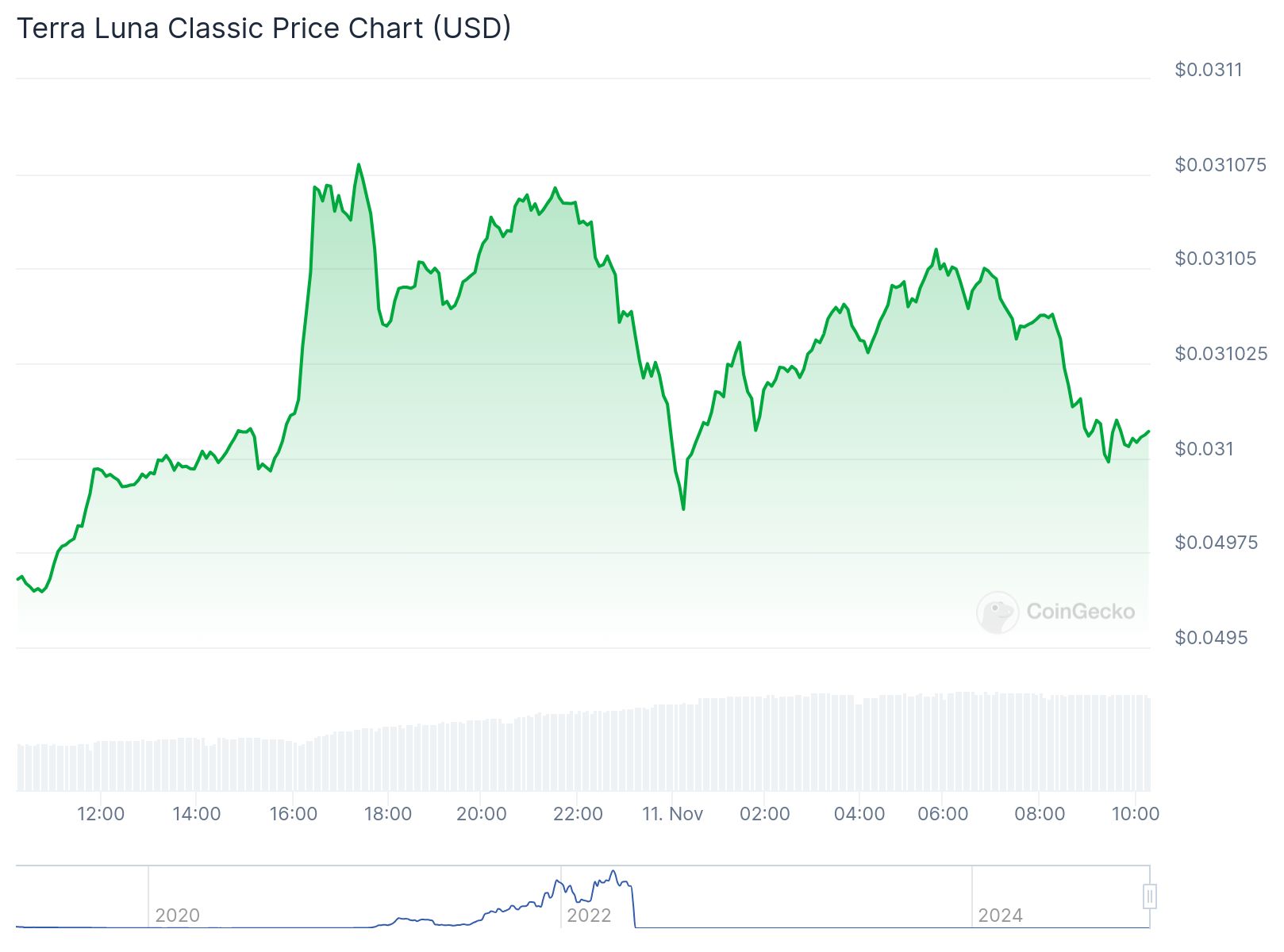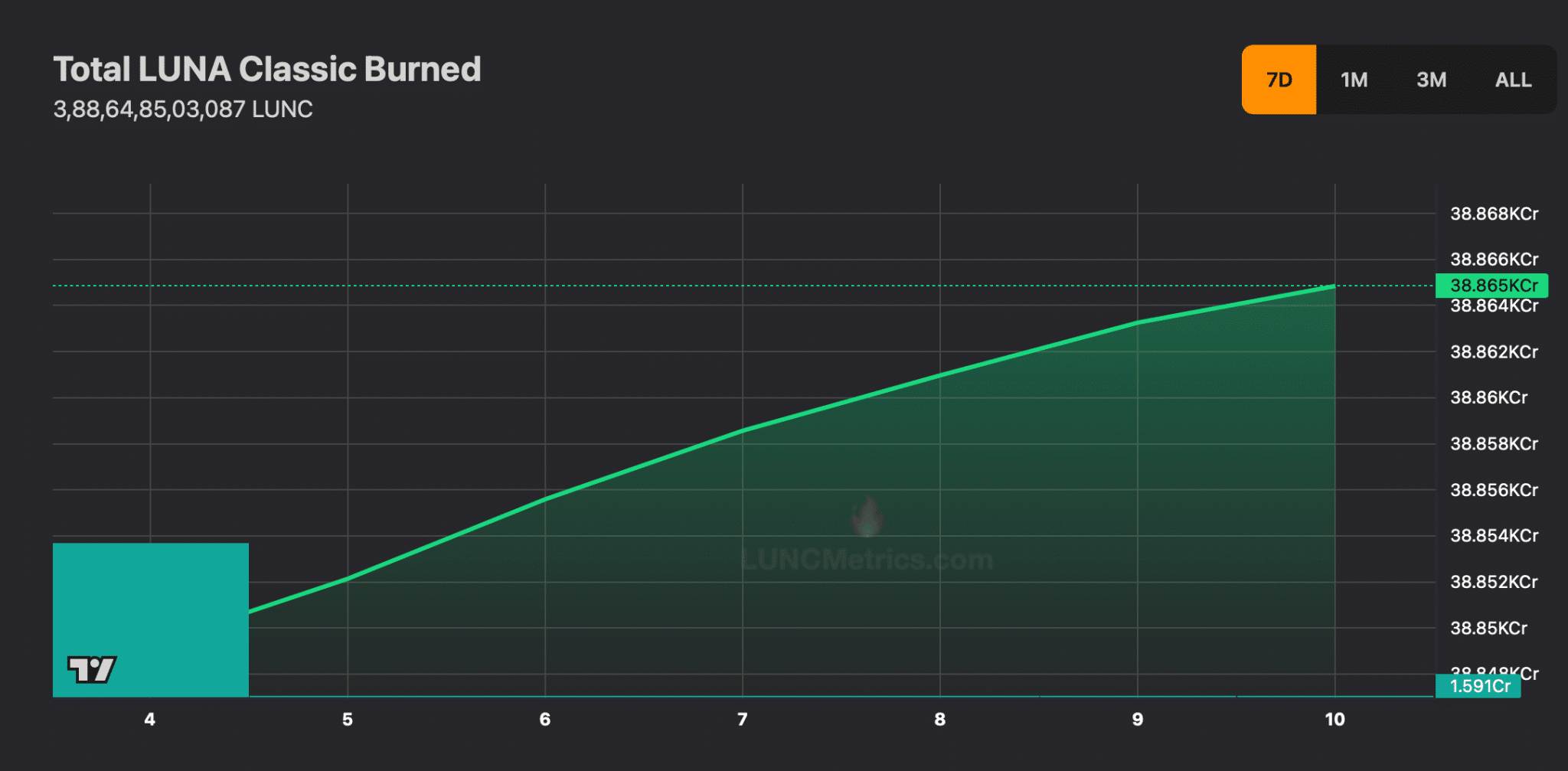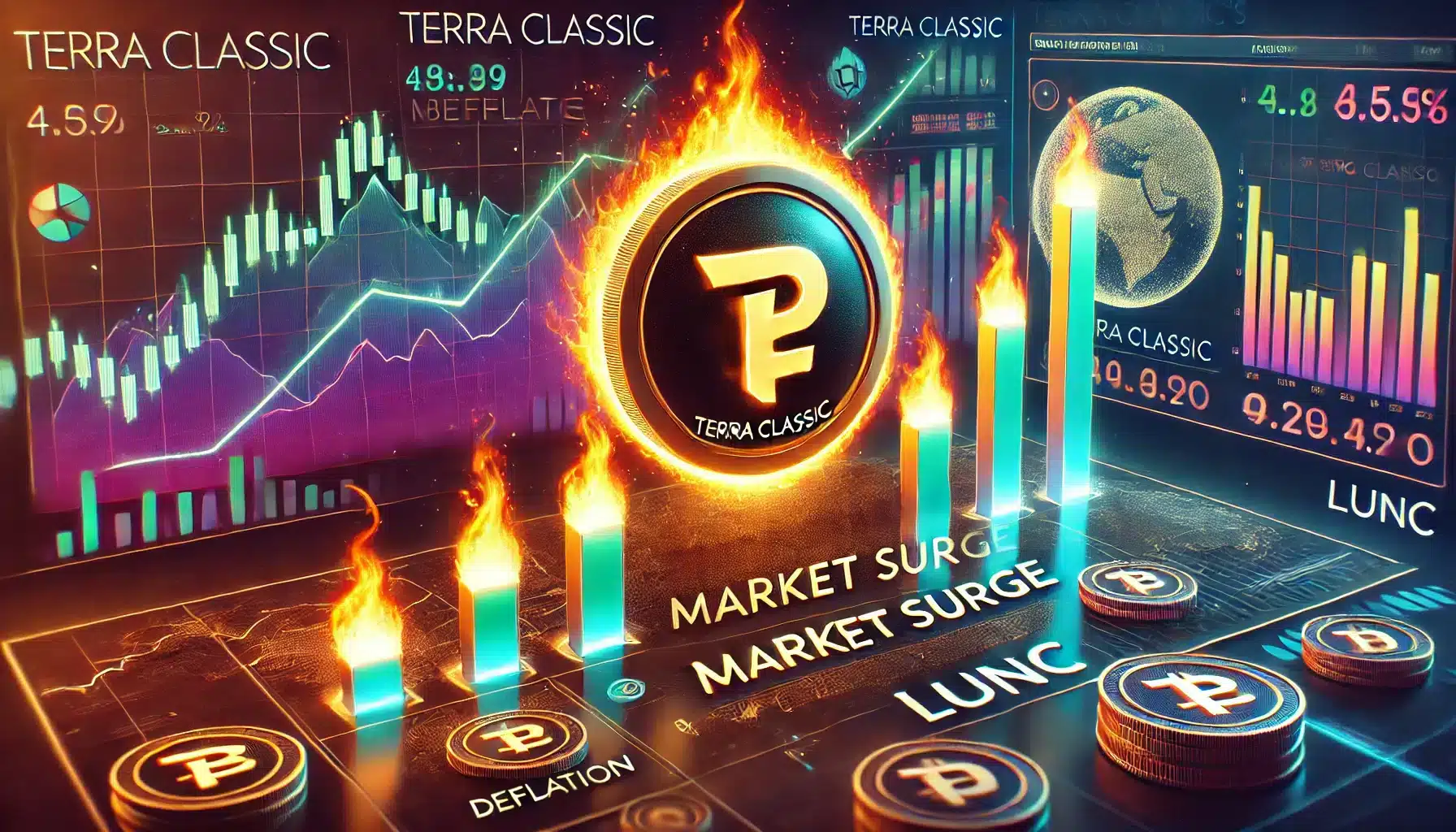Terra Classic (LUNC) has recently caught investors’ attention by posting double-digit gains and experiencing a significant boost in market cap. The increase in LUNC’s burn rate has created potential for a positive price impact due to a reduced supply. However, short-term correction risks remain, leading to possible price fluctuations.
Terra Classic’s Rise and Investor Interest
In recent weeks, Terra Classic has joined other major cryptocurrencies in a robust rally, with its price increasing by over 18% over the past week, according to CoinMarketCap. This upward trend has continued in the last 24 hours, with LUNC rising by an additional 6%, bringing its market cap above $544 million and placing it as the 130th largest crypto asset. Alongside this price increase, LUNC has gained popularity on social media, though sentiment around the token has recently turned more cautious, hinting at the possibility of a price correction.
The rising burn rate is a key factor for Terra Classic. On November 6, a substantial increase in LUNC’s burn rate was recorded, reducing the circulating supply and signaling a deflationary trend that could make the token more valuable. Increasing the burn rate generally decreases total supply, which often has a positive effect on price.
What’s Next for Terra Classic?
LUNC’s future potential is also tied to its open interest data. Following a major price surge on November 10, LUNC’s open interest has seen a notable drop, indicating a possible trend reversal. However, data from Coinglass remains optimistic, showing a rise in LUNC’s long/short ratio, with more long positions indicating prevailing bullish sentiment in the market.
An upward trend in LUNC’s Relative Strength Index (RSI) further suggests increased capital inflow into the token, often a sign of continued price growth. However, the token has moved above the upper Bollinger Band, signaling the potential for a short-term correction. Investors should exercise caution as the possibility of a correction could impact near-term price movements.









